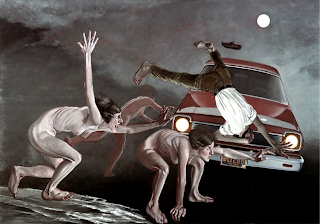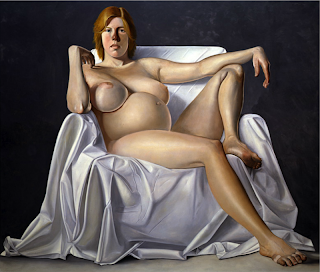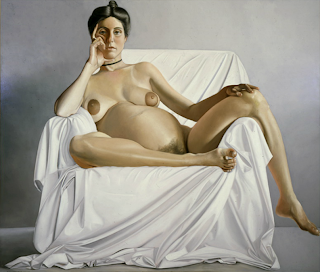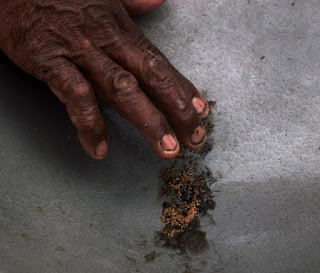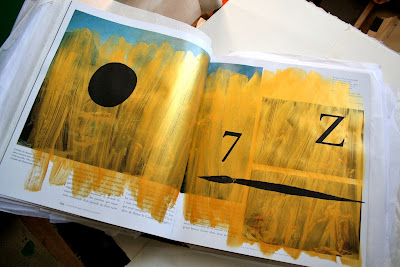 |
| Manuel Casimiro, L'univers des Orientalistes (art book), 2012 |
Flying gestalt
by ANTÓNIO CERVEIRA PINTO
I know Manuel Casimiro work for thirty-years now. He paints, he does sculptures and installations and occasionally accepts commissions for designing objects. In all his works there's a common seme that he calls the ovoid. It is an ovoid form indeed, but not as biomorphic as it is supposed to be. To my mind it has more of a void sign than of an egg shape. Sometimes it looks like a discus, in other pictures more of a flying saucer, or a stain. I also associate this operative gestalt manipulated by MC over his artworks as a black hole, a negative vortex that can swallow the image that it reveals on the surface. It is this complexity that gives formal powers to Casimiro's original approach to existing artworks and artifacts as an ideal locus for ready-made operations.
It is also true that MC applies his famous ovoid to original artworks created by him from the start. But in this particular trend I have to suspend my judgment. I see the ovoid as a pattern and as a cultural interference — and that's what I love about that flying gestalt.
A few weeks ago I paid a visit to Manuel Casimiro's atelier. Excellent wines, I must confess, we tasted! But I also had the opportunity to see a new ovoid operation; black and gold paint on a glossy and heavy book by Gérard-Georges Lemaire titled L'Univers des Orientalistes.
It is an impressive work. Not exactly un livre d'artiste, but more of a capsule for a voyage in time, from the industrial offset book printing to a medieval handmade illumination.
I would like to see this rectified ready-made in a clean white cube soon.
 |
| Manuel Casimiro, L'univers des Orientalistes (art book), 2012 |
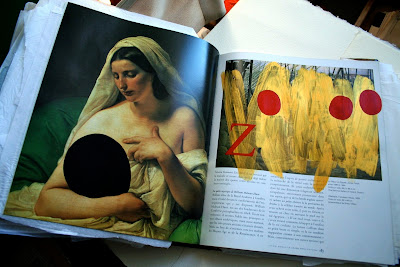 |
| Manuel Casimiro, L'univers des Orientalistes (art book), 2012 |
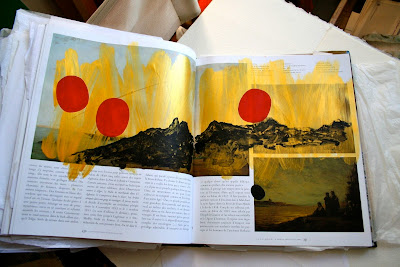 |
| Manuel Casimiro, L'univers des Orientalistes (art book), 2012 |
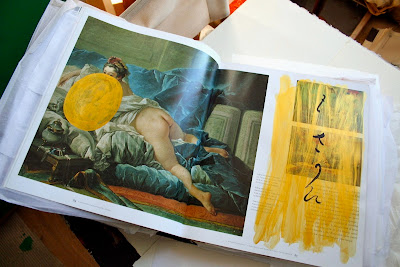 |
| Manuel Casimiro, L'univers des Orientalistes (art book), 2012 |
 |
| Manuel Casimiro, L'univers des Orientalistes (art book), 2012 |

